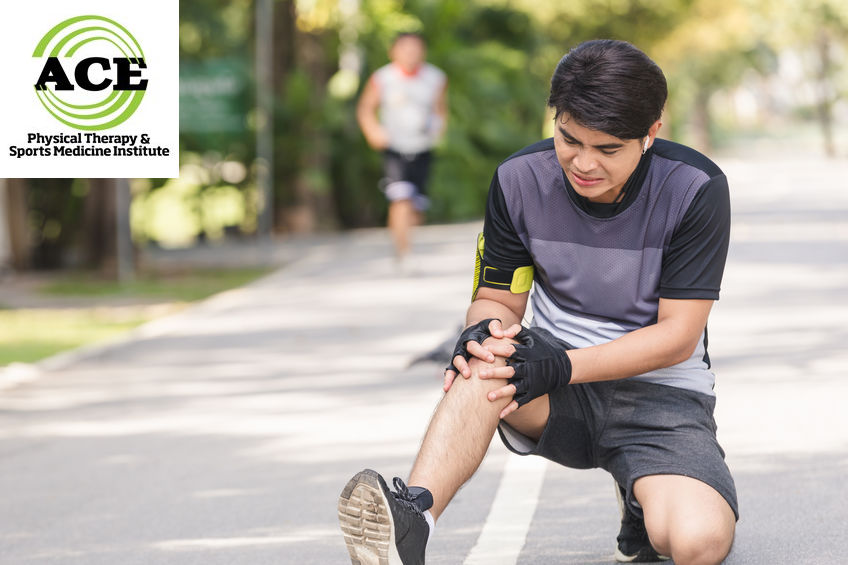PREDICTING RUNNING INJURIES

Tid Bits of Info
- Long distance runners have routinely been found to have low blood pressure.
- A runner can strike the ground with a force that measures up to 7x their body weight.
- Most runners take between 1-2000 strides per mile.
- Running “burns” approximately 50% more calories than walking.
- You should be evaluated by Physical Therapist to have them develop and implement a thorough exercise routine before you begin a running program.
Running has become a popular activity for many people because it provides stress relief, can be enjoyed year-round, and is an ideal cardiovascular workout. At the same time, some people suffer injuries as they run on a regular basis. Is there a way to determine if someone is at risk for running injuries? Some researchers are now suggesting that increased injuries might be the result of several anatomical and physiological factors that influence the biomechanics of gait/stride. If these factors are addressed, can some injuries be prevented?
Running injuries are some of the most common injuries that healthcare professionals deal with on a daily basis because of the vast number of people who run as part of their regular cardiovascular exercise routine. The most common injuries that are evaluated and treated are patella femoral pain (PFP), iliotibial band syndrome (ITBS), medial tibial stress syndrome (MTSS), and Achilles tendinopathy (AT). All of these have been linked to one or many anatomical and physiological factors. The most prominent of these factors that are studied and treated are contralateral (opposite) hip drop, hip adduction and rearfoot eversion. The common findings can be directly or indirectly linked to a runner’s injury. Some of these are due to the anatomy of the runner’s foot and others are associated with weakness in the core and lower extremity musculature.
Contralateral hip drop is a result of weakness in the gluteal muscles and primarily the gluteus medius muscle. This muscle’s action is to stabilize and maintain a level pelvis by “holding up” the opposite side of the pelvis when the runner is in a single leg weight bearing posture. Obviously, this single limb weight bearing occurs with every stride, therefore weakness of the gluteus medius would lead to a “drop” of the pelvis on the non-weight bearing limb.
Hip adduction is associated with a similar weakness of core and gluteal muscles. If the gluteal musculature and core muscles are not strong enough to control the motion of the femur it will “collapse” towards the midline of the body when the foot strikes the ground during a running stride. This adduction motion can place a tremendous amount of strain on the patella femoral joint and distal ITB. If this is not corrected, PFP or ITBS might develop.

Rearfoot eversion occurs due to the natural anatomical development of a runner’s foot bones. If a runner has excessive rearfoot eversion, they will appear to have a flat foot with no medial arch during the weight bearing portion of the stride. Mid-stride weight bearing is the portion of the runner’s gait that this anatomical finding is most noticeable. This position of the foot can cause the entire leg to move excessively and place a great deal of strain on all of the soft tissues of the involved leg. Prior to the final phase of the stride cycle, the entire movement pattern of the lower extremity has to be reversed so the foot and ankle can “push off” to advance the to the next stride. This repetitive motion during running, if excessive can damage the soft tissues of the lower extremity.
Treating these anatomical and physiological factors can be successful if the proper strengthening and stretching program is implemented. Physical Therapists are able to evaluate and develop a treatment routine that will address the findings that might be the origin of the symptoms. Strengthening the core and gluteal musculature is extremely important. They might address excessive rearfoot eversion with an insert in the shoe that provides support to the arch. Custom inserts can help to alleviate the abnormal motion in the involved foot, but not everyone needs a custom orthotic.
If you are a runner and you develop lower extremity pain you should seek the advice and treatment of a Physical Therapist who specializes in orthopaedic injuries. They will develop a program that will address the deficiencies that are present and educate you in a way that will enable you to perform a program that will help to resolve your symptoms and eliminate their return.
























